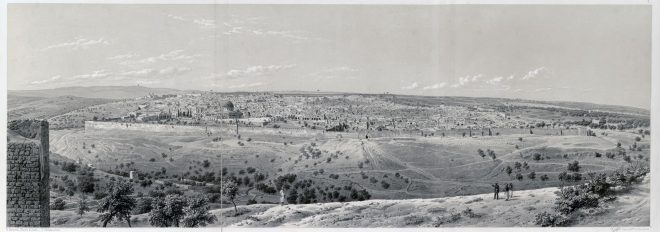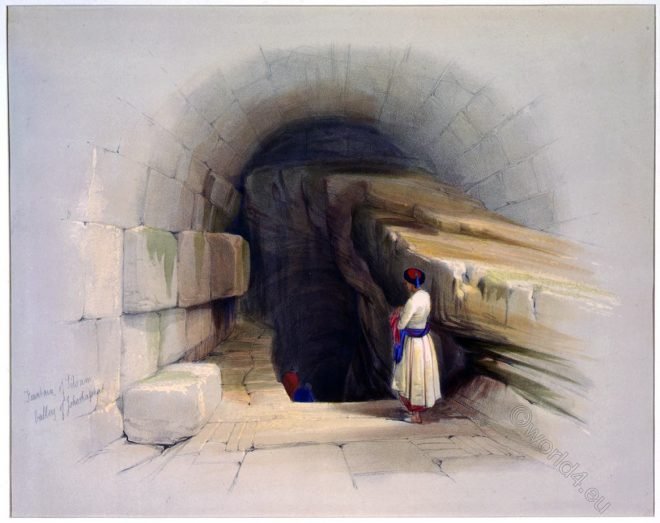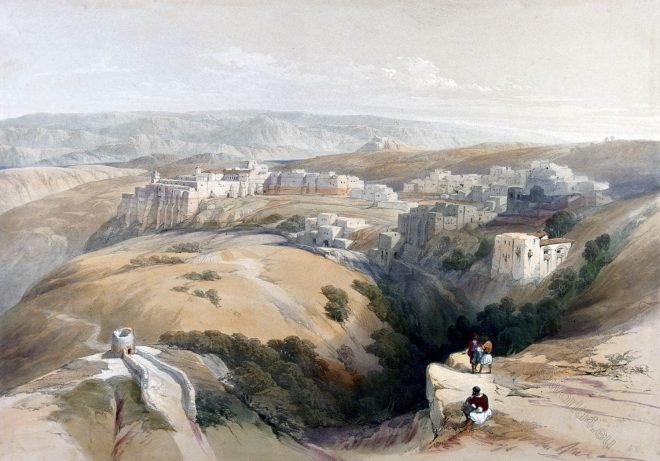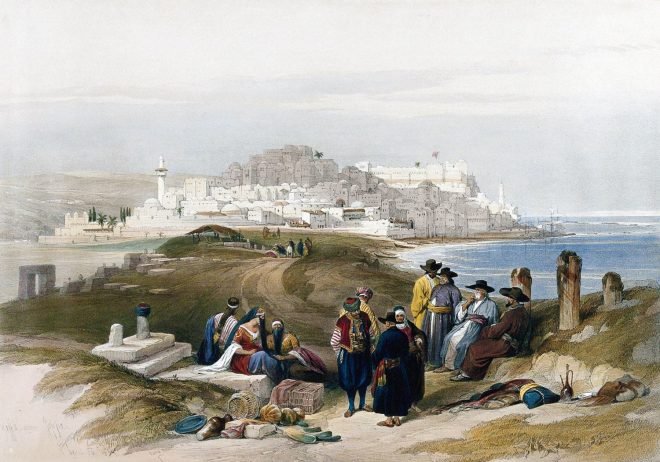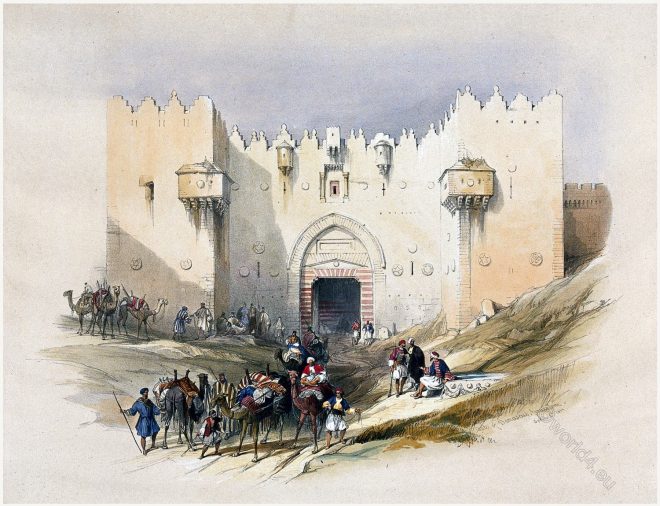Ancient citadel of the Jebusites, afterwards that of David, then that of the Pisans. The Jaffa Gate.
Category: Israel
Mount Moriah, one of the four hills on which Jerusalem stood.
Mount Moriah is the third of the four hills on which Jerusalem stood in the time of Jesus Christ, according to the description of Josephus.
Panorama of Jerusalem, seen from the Mount of Olives.
Jerusalem Explored. Being a description of the ancient and modern city, by Ermete Pierotti, transferred to stone by Thomas Pitken. London 1864
The ancient Jerusalem. Geographical and historical. The Holy Land.
The importance of Jerusalem to Israel and the world is due the fact that it became the seat of the chosen Temple of God.
The Upper Fountain of Siloam. Valley of Jehosophat.
Siloam consists of two basins or fountains, the upper one of which is a fissure in the solid rock. A flight of steps leads down on the inside to the water.
Lower Pool of Siloam, Valley of Jehoshaphat.
Siloam is now used as a public fountain; but it seems to have been once sacred to the uses of the Temple. The Holy Land by David Roberts
Bethlehem. Historical views and description of its sites.
The town of Bethlehem and its surroundings depicted and described in the travelogues of David Roberts and Luigi Mayer in the 19th century.
Jaffa, ancient Joppa, as the chief harbour of Judaea.
Jaffa, the ancient Joppa, and now called by the Arabs Yafa, rose into early importance, as the chief harbour of Judaea.
View of the Damascus Gate, leading into Jerusalem.
The Damascus Gate or Bab al-Amud, is one of the main gates and the largest city gate of the Old City of Jerusalem.
The Holy Land. Jerusalem from the road leading to Bethany.
View of Jerusalem from a distance. The city is called by the Arabs, El-Kuds (the Holy); and also by Arabian writers, Bek El-Mukaddas (the Sanctuary).



